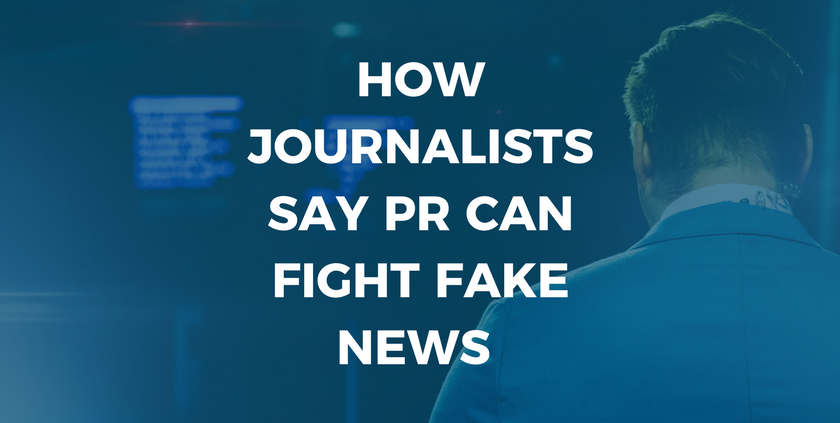Cision MediaRoom
This is a template for a simple marketing or informational website. It includes a large callout called a jumbotron and three supporting pieces of content. Use it as a starting point to create something more unique.
Articles

Fake news. An extraordinary recent addition to the American lexicon frequently heard in the news and speeches. Although sometimes applied pejoratively, the validity of news shared on social media is a concern for nearly everyone. A recent Pew survey found that only 11 percent of Americans completely trust the news that they read on social media.
The Cision 2017 Global Social Journalism Study outs journalists as similarly skeptical. Over half of journalists described fake news as undermining their area of journalism. Further, across verticals, journalists question the trustworthiness of PR professionals between 40 and 65 percent of the time. Not only is fake news a concern for journalists, but some of them attribute it to communications professionals.
What I want to do in this post is to take a look at how widespread the (non-pejorative) fake news phenomenon is and look at some ways that PR professionals and marketers can provide utility to journalists that may be on high alert for disingenuousness.
What is fake?
Hunt Allcott and Matthew Gentzkow define “fake news” as “news articles that are intentionally and verifiably false, and could mislead readers.” They also describe that the motivation for publishing fake news isn’t ideological — fake news can be a lucrative endeavor for many publishers.
Alcott and Gentzkow also describe that the “fake news” phenomenon is not unique to current day. There are multiple instances where fake news stories influenced public opinion, most notably 1975 stories describing a large conspiracy around the assassination of Martin Luther King, an assertion that nearly 60 percent of Americans believed.
What is unique to the current day is the confluence of fake news with distribution via social media platforms. Facebook is a daily hub of social activity and expression for most people, and Facebook friends are often ideologically similar to ourselves. A survey from Weber Shandwick illustrates a central problem to social media’s perpetuation of fake news — although 82 percent of respondents are concerned with fake news, only 9 percent believe that they have shared a fake news story. Fake news is something that other people perpetuate, perhaps revealing how difficult fake news is for many people to identify.
Social Media is Speedy, And This Causes a Problem
Another key insight from the Cision Global Social Journalism Study is that 84 percent of journalists describe social media as either “important” or “very important” to the promotion and publication of their content. Fake news utilizes the same media that journalists recognize as crucial to the promotion of content. A recent article from MIT Technology Review also implicates social bots in the perpetuation of fake news, so the “virality” ascribed to these types of stories may be technology-assisted.
Social media’s influence on journalism is not just for promotion, though. Social and digital media have created more work for journalists to compete with news aggregators and smaller publishers. The Global Social Journalism Study reveals that journalists are both reliant on and responsible for social media promotion and interaction, and describe its focus as “speed over analysis.” Digital media creates a lot of new and additional work for traditional journalists to perform, allowing for a lot less analytical time than in the past.
According to the Cision Global Social Journalism Study, 72 percent of full-time journalists use social media at least daily, with 19 percent responding that they use it hourly. As traditional journalism jobs decrease and the digital responsibilities of journalists increase, it appears that there may be an inherent tension in the relationship about how journalists use these tools. Social also tends to diminish reader perception of objectivity, making these tools both necessary and perhaps damaging for journalists.
The PR Playbook
Media platforms are fighting fake news. Facebook is dealing with bad optics of perpetuating fake news and is taking steps to illuminate it better on their platform. Companies like Mozilla are finding opportunities to create trust around news through third-party tools. But a credibility gap remains for social platforms. Journalist ambivalence towards the PR profession makes this a very difficult environment for PR pros and marketers.
The Cision® Media Database and Comms Cloud™ are great resources to assist PR professionals in understanding the specifics about what journalists and influencers cover, and also to identify where there may be opportunities within specific verticals. There is also very rich data contained in the Global Social Journalism Study detailing six personas to segment journalists by based on factors such as their affinity for social media and how they use this. We’ll explore this in more detail in future posts (or you can read it in the study) but sufficed to say that there is a very stark difference between perception and use of social media between the six personas.
After understanding the journalists that you seek to partner with, fake news may necessitate that PR professionals and marketers provide overtly credible resources for journalists to use. This perhaps extends beyond more traditional aspects of the job. For example, PR firm 5W describes “data science” as a desired skill set for PR. From a journalist’s perspective (especially one that has a lot of responsibility or spends a lot of time using social media) the more relevant, credible, and digitally usable the information that PRs provide, the more likely it is to be used.
Conclusion
As the prevalence of fake news both in our lexicon and in practice increases, journalists appear apprehensive of the PR and marketing professions, especially in the context of social media. PR professionals should take the time to understand journalist needs and to provide high-quality resources that help journalists with their (increasingly digital) responsibilities.
As with most other professions, credibility matters.
